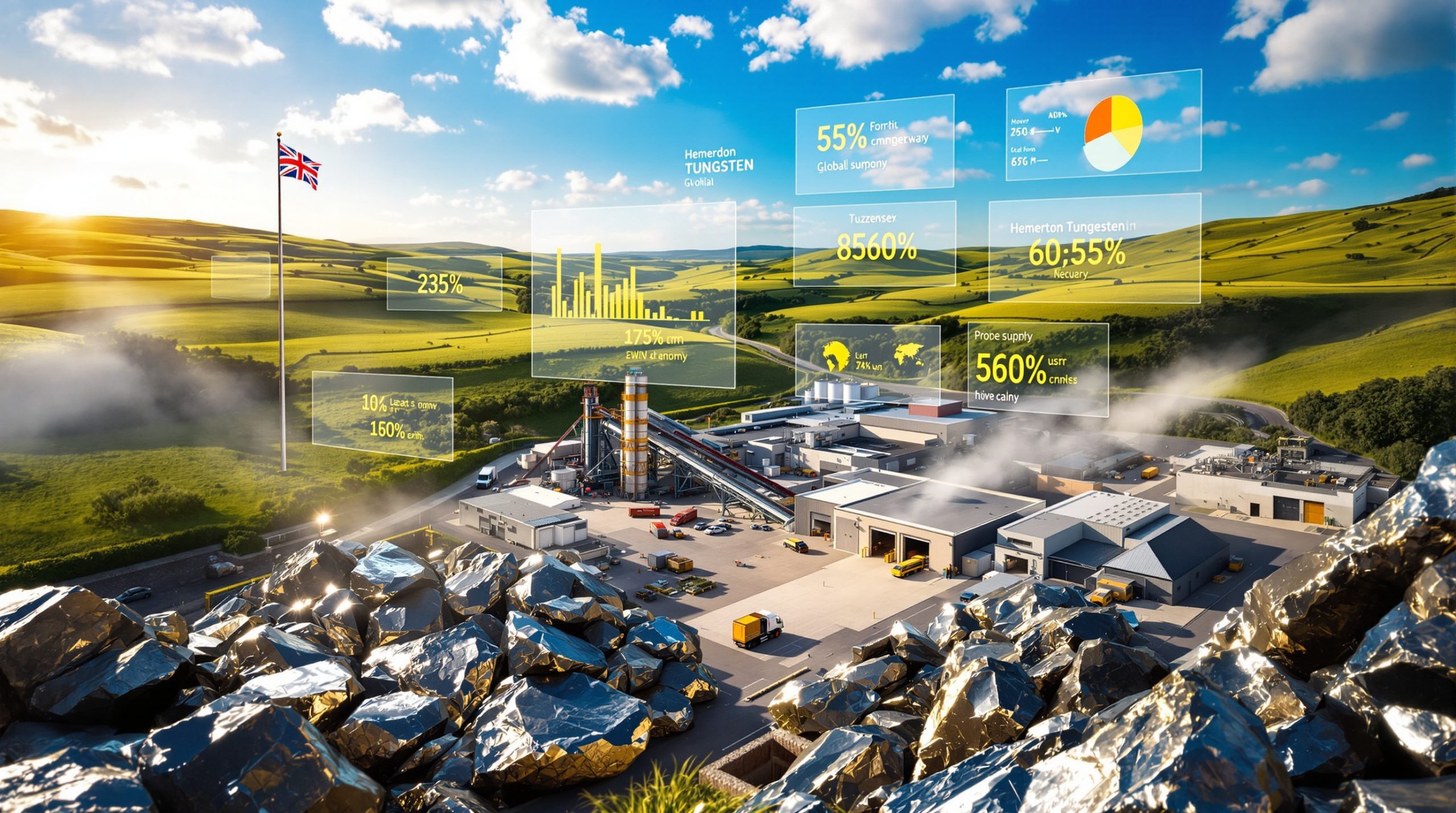The Evolution of Gold Through Digital Innovation
The digital gold market transformation represents a fundamental shift in how investors access, trade, and store precious metals in the modern financial ecosystem. This evolution combines traditional gold's time-tested value preservation characteristics with cutting-edge technological infrastructure, creating unprecedented opportunities for both institutional and retail investors.
Traditional gold markets have operated within established frameworks for centuries, but technological advancement is now reshaping every aspect of precious metals trading. From blockchain-powered tracking systems to mobile-first investment strategies, the digitization process is addressing longstanding market inefficiencies while expanding access to global audiences previously excluded from gold ownership.
The transformation encompasses multiple technological components working in harmony:
• Blockchain integration for transparent supply chain tracking
• Tokenization protocols enabling fractional ownership
• Mobile trading applications providing 24/7 market access
• Artificial intelligence systems powering market analytics and portfolio optimization
These innovations are collectively democratizing gold investment, reducing barriers that historically limited participation to high-net-worth individuals and institutional players.
Central Bank Purchasing Patterns Drive Market Dynamics
Central banking institutions have emerged as the primary catalyst behind recent gold market strength, fundamentally altering supply-demand equilibrium through unprecedented purchasing volumes. Understanding these institutional motivations provides crucial insight into future market trajectories and record-breaking gold prices.
Historical purchasing data reveals dramatic acceleration in central bank gold accumulation. Between 2010 and 2021, global central banks maintained relatively consistent annual purchases of approximately 500 tons per year. However, from 2022 onwards, this figure doubled to exceed 1,000 tons annually, representing the most significant institutional buying surge in modern precious metals history.
The catalyst for this purchasing acceleration traces to specific geopolitical events, particularly sanctions imposed on Russian foreign exchange reserves in 2022. This unprecedented action demonstrated that traditional reserve assets, previously considered sovereign and inviolable, could face foreign interference. Consequently, this realization prompted widespread reassessment of reserve composition strategies across central banking institutions globally.
Strategic Reserve Diversification Motivations
Central banks are pursuing gold accumulation for several interconnected reasons:
Geopolitical Risk Mitigation: Physical gold stored in domestic vaults cannot be frozen or sanctioned by foreign powers, providing genuine sovereignty over monetary reserves.
Monetary Policy Independence: Gold holdings reduce dependence on foreign currency reserves, particularly US dollars, enabling greater policy autonomy during economic stress periods.
Inflation Hedge Characteristics: As governments worldwide grapple with debt sustainability concerns, gold provides insurance against currency debasement and purchasing power erosion.
Portfolio Rebalancing: Diversification away from traditional government bonds and foreign currency holdings toward assets with no counterparty risk.
| Period | Annual Central Bank Purchases | Key Drivers |
|---|---|---|
| 2010-2021 | ~500 tons | Gradual diversification |
| 2022-Present | 1,000+ tons | Sanctions risk awareness |
| Projected 2025-2026 | 800-1,200 tons | Continued geopolitical uncertainty |
Blockchain Technology Revolutionizes Gold Market Infrastructure
Blockchain integration addresses fundamental challenges plaguing traditional gold markets while enabling innovative trading mechanisms previously impossible within conventional frameworks. This technological foundation supports enhanced transparency, improved liquidity, and expanded accessibility across the digital gold market transformation landscape.
Gold Bar Integrity Programs Transform Supply Chain Transparency
Modern blockchain implementations enable comprehensive tracking from mine extraction through final ownership transfer, addressing critical concerns about ethical sourcing and authenticity verification. These systems create immutable records documenting:
• Complete provenance history from mine to market
• Ethical sourcing verification ensuring responsible mining practices
• Authenticity confirmation eliminating counterfeit gold risks
• Regulatory compliance documentation automating reporting requirements
• Environmental impact tracking supporting ESG investment criteria
The technology enables investors to verify that their gold holdings originate from responsible sources and have passed through legitimate custody chains. Furthermore, this addresses growing demand for ethically sourced precious metals whilst supporting industry innovation trends.
Smart Contract Applications Enable Advanced Trading Features
Blockchain-based smart contracts automate complex trading processes while reducing settlement times and eliminating intermediary risks. These programmable agreements facilitate:
Instant Settlement: Traditional gold transactions requiring 2-3 business days for settlement now execute immediately upon contract fulfillment.
Fractional Ownership: Unlimited divisibility enables investments starting from minimal amounts, contrasting sharply with traditional gold's minimum purchase requirements.
Automated Compliance: Smart contracts ensure all regulatory requirements are met automatically, reducing legal risks and administrative overhead.
Cross-Border Efficiency: Digital gold transfers eliminate geographical restrictions and currency conversion complexities.
The integration of blockchain technology with gold trading represents the most significant infrastructure advancement in precious metals markets since electronic trading platforms emerged in the 1980s.
Moreover, these developments are supported by digital gold digitalisation initiatives that are transforming global precious metals markets.
Investment Opportunities Emerge Through Digitisation
Digital transformation creates multiple investment pathways that democratise gold ownership while generating new income streams previously unavailable in traditional precious metals markets. These opportunities align with broader market resurgence trends shaping the industry.
Fractional Ownership Revolution Expands Market Access
Digital platforms now enable gold investments starting from as little as $1 USD equivalent, eliminating traditional barriers that restricted participation to wealthy individuals. This fractional ownership model operates through:
• Pooled ownership structures where multiple investors share allocated gold bars
• Tokenised representations backed by physical gold in accredited vaults
• Mobile-first platforms enabling micro-investments through smartphone applications
• Automatic reinvestment programs compounding small regular purchases over time
Yield-Generating Gold Products Address Income Limitations
Traditional gold's lack of yield generation has been addressed through innovative digital products creating income streams:
Gold-Backed Lending Protocols: Digital platforms offer 2-5% annual yields through secured lending using gold as collateral, providing passive income while maintaining gold exposure.
Staking Mechanisms: Tokenised gold holders can participate in network validation processes, earning additional tokens as rewards for supporting platform security.
Collateralised Finance: Digital gold serves as collateral for loans, enabling liquidity access without selling underlying assets.
Structured Products: Complex financial instruments combining gold exposure with derivative strategies to enhance returns while managing risk.
Enhanced Liquidity Solutions Bridge Physical and Digital Markets
Pooled Gold Interests represent hybrid products combining allocated gold ownership certainty with unallocated gold liquidity advantages. These instruments enable institutional-grade trading while maintaining beneficial ownership rights over specific gold bars.
Standard Gold Units eliminate confusion arising from different national gold standards by creating universal trading units accepted across platforms and jurisdictions. Additionally, this standardisation facilitates seamless global transactions without complex conversion calculations.
Regional Adoption Patterns Reveal Market Leadership
Digital gold adoption varies significantly across geographical regions, with Asia-Pacific markets demonstrating particularly strong growth in retail participation while Western markets focus on institutional applications.
Asia-Pacific Markets Lead Retail Innovation
India's Digital Gold Explosion: Mobile platforms enabling investments starting from ₹1 minimum amounts have captured significant market share among younger demographics. Millennial and Generation Z adoption rates exceed 40%, driven by integration with existing fintech ecosystems and cultural affinity for gold ownership.
China's Institutional Integration: State-backed digital gold initiatives are developing alongside central bank digital currency (CBDC) frameworks, creating comprehensive digital asset ecosystems. However, blockchain adoption in institutional gold trading has accelerated through government support and regulatory clarity.
Southeast Asian Expansion: Countries including Thailand, Malaysia, and Singapore are developing regional digital gold trading hubs, leveraging favourable regulatory environments to attract international platforms.
Western Markets Emphasise Institutional Development
United States Innovation: ETF product expansion continues alongside institutional blockchain pilot programs. Regulatory framework development under various federal agencies is creating clearer operational guidelines for digital gold platforms.
European Standardisation: Cross-border trading initiatives are standardising digital gold products across EU member states while developing ESG-compliant investment options meeting sustainability criteria.
Regulatory Evolution: Western regulators are balancing innovation encouragement with investor protection, creating comprehensive frameworks governing digital asset custody and trading.
Macroeconomic Forces Shape Digital Gold Trajectory
Current macroeconomic conditions create favourable environments for digital gold adoption while traditional monetary policy tools face effectiveness limitations. These conditions support ongoing analysis of gold price forecast trends across global markets.
Interest Rate Environment Influences Investment Flows
Federal Reserve policy decisions significantly impact digital gold attractiveness through multiple transmission mechanisms:
Rate Reduction Cycles: Lower interest rates reduce opportunity costs of holding non-yielding assets like gold, encouraging allocation increases from yield-seeking investors.
Dollar Weakness Dynamics: Accommodative monetary policy typically weakens US dollar purchasing power, making dollar-denominated gold more attractive to international investors.
Quantitative Easing Effects: Asset purchase programs increase money supply, driving investors toward alternative stores of value including digital gold products.
Inflation Protection Characteristics Remain Intact
Digital gold maintains traditional inflation hedging properties while offering enhanced accessibility during economic uncertainty periods. Historical data demonstrates gold's effectiveness as purchasing power protection during inflationary episodes, with digital platforms enabling rapid position adjustments as economic conditions evolve.
Real Interest Rate Analysis: When inflation-adjusted interest rates turn negative, gold becomes increasingly attractive as opportunity costs decline. For instance, digital platforms facilitate quick portfolio rebalancing in response to changing real rate environments.
Currency Debasement Insurance: Government debt sustainability concerns across developed markets create long-term demand for assets immune to monetary policy manipulation.
Investment Risk Assessment and Management Strategies
Rapid price appreciation and technological dependencies create specific risk profiles requiring careful evaluation and mitigation strategies within the digital gold market transformation.
Portfolio Concentration Risks Require Monitoring
Gold's exceptional performance, with gains exceeding 60% during recent periods, may create unintended portfolio overweighting. Professional investment management requires regular rebalancing to maintain target allocations and risk parameters.
Rebalancing Frameworks:
-
Threshold-based rebalancing when allocations exceed target ranges by predetermined percentages
-
Time-based rebalancing at regular intervals regardless of performance
-
Volatility-based adjustments responding to market stress periods
-
Tax-efficient rebalancing considering capital gains implications
Technology-Related Risk Factors
Cybersecurity Vulnerabilities: Digital platforms face constant threats requiring robust security infrastructure and comprehensive insurance coverage.
Private Key Management: Self-custody solutions require secure key storage and backup procedures to prevent permanent asset loss.
Platform Reliability: Network congestion during high-volume trading periods may impact execution quality and transaction costs.
Smart Contract Risks: Programming errors in automated systems could result in unexpected losses or system failures.
| Risk Category | Probability | Impact | Mitigation Approach |
|---|---|---|---|
| Platform Security Breach | Medium | High | Multi-platform diversification |
| Regulatory Changes | High | Medium | Compliance monitoring |
| Technology Failure | Low | High | Backup custody solutions |
| Market Manipulation | Low | Medium | Institutional-grade platforms |
| Liquidity Constraints | Low | Low | Multiple exit strategies |
Regulatory Evolution Creates Uncertainty
Evolving regulatory frameworks across jurisdictions create compliance challenges and potential operational disruptions. Successful digital gold investment requires ongoing monitoring of regulatory developments and platform compliance status.
Future Market Trajectory and Price Projections
Financial institutions project continued gold price appreciation driven by fundamental supply-demand imbalances and ongoing digitisation trends. These projections are increasingly supported by digital gold investment platforms that enhance market accessibility.
Price Target Analysis
Multiple investment banks forecast gold prices reaching $4,000+ per ounce by 2026, supported by:
• Persistent central bank accumulation maintaining elevated demand levels
• Digital adoption acceleration expanding investor accessibility
• Geopolitical uncertainty continuation sustaining safe-haven demand
• Currency debasement concerns across major economies
• Supply constraints from declining mine production and exploration
Technological Integration Expansion
Next-generation features under development include:
Artificial Intelligence Integration: Portfolio optimisation algorithms using machine learning to identify optimal allocation strategies based on individual risk profiles and market conditions.
Cross-Chain Interoperability: Protocols enabling gold token transfers across different blockchain networks, increasing liquidity and reducing platform dependence.
Programmable Financial Products: Smart contracts automating complex investment strategies including dollar-cost averaging, profit-taking, and rebalancing.
Decentralised Finance Integration: Gold-backed lending, borrowing, and yield farming opportunities within DeFi ecosystems.
Market Structure Evolution Toward Hybrid Model
The gold market is transitioning toward hybrid structures combining physical security with digital efficiency. This evolution creates opportunities for both traditional precious metals investors and technology-focused participants seeking exposure to digital asset innovation.
Institutional Infrastructure: Professional-grade custody solutions meeting regulatory requirements while providing enhanced liquidity and trading capabilities.
Retail Accessibility: Consumer-friendly interfaces enabling fractional ownership and flexible investment strategies previously reserved for institutional investors.
Strategic Investment Framework Development
Successful digital gold investment requires comprehensive strategy development considering risk tolerance, investment objectives, and market dynamics within the evolving digital gold market transformation.
Portfolio Allocation Methodologies
Conservative Allocation (5-10%): Suitable for investors prioritising wealth preservation and portfolio diversification without significant risk assumption.
Moderate Strategy (10-15%): Balanced approach providing meaningful inflation protection while maintaining diversified portfolio characteristics.
Aggressive Positioning (15-25%): Maximum inflation protection and alternative currency exposure for investors anticipating significant monetary policy challenges.
Platform Selection Criteria
When evaluating digital gold platforms, consider these essential factors:
• Regulatory compliance and licensing in relevant jurisdictions
• Physical backing verification through regular audits and blockchain tracking
• Security infrastructure including multi-signature custody and insurance coverage
• Fee structure transparency covering storage, trading, and management costs
• Liquidity provisions ensuring reliable entry and exit capabilities
• User interface quality and mobile accessibility features
• Customer support responsiveness and technical expertise
Market Psychology and Investment Behaviour Patterns
Digital gold adoption reflects broader shifts in investor psychology and risk perception, particularly among younger demographics more comfortable with technology-enabled financial products.
Generational Preferences: Millennials and Generation Z investors demonstrate higher adoption rates for digital gold products compared to traditional physical ownership, driven by mobile-first investment preferences and environmental consciousness regarding mining practices.
Risk Perception Evolution: Recent geopolitical events have heightened awareness of traditional financial system vulnerabilities, increasing demand for assets offering genuine ownership and storage independence.
Behavioural Finance Factors: Digital platforms enable dollar-cost averaging and automatic investment strategies that help mitigate emotional decision-making during volatile periods.
The digital gold market transformation represents more than technological advancement; it embodies fundamental changes in how investors conceptualise value storage, portfolio diversification, and monetary system alternatives. As blockchain technology matures and regulatory frameworks solidify, digital gold is positioned to become as liquid and accessible as traditional financial instruments while maintaining its historical store-of-value characteristics.
This evolution creates unprecedented opportunities for investors seeking portfolio diversification, inflation protection, and exposure to humanity's oldest monetary asset through cutting-edge technological infrastructure. Success in this emerging market requires understanding both traditional gold fundamentals and digital asset innovation, combining time-tested investment principles with modern technological capabilities.
Looking to Capitalise on Digital Gold Market Opportunities?
Discovery Alert's proprietary Discovery IQ model delivers real-time alerts on significant gold and precious metals discoveries across the ASX, transforming complex mineral data into actionable investment insights that complement your digital gold strategy. Explore how major mineral discoveries have generated exceptional returns by visiting Discovery Alert's dedicated discoveries page, then begin your 30-day free trial to position yourself ahead of the market in both traditional and digital precious metals opportunities.




